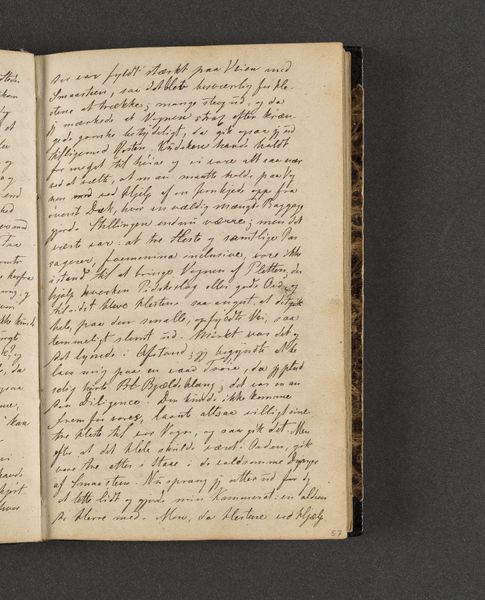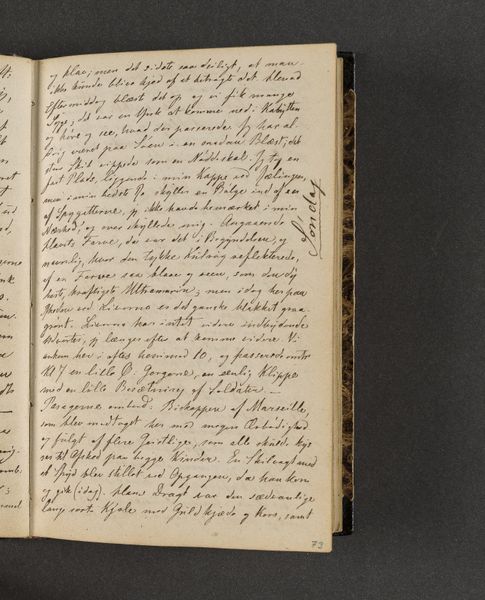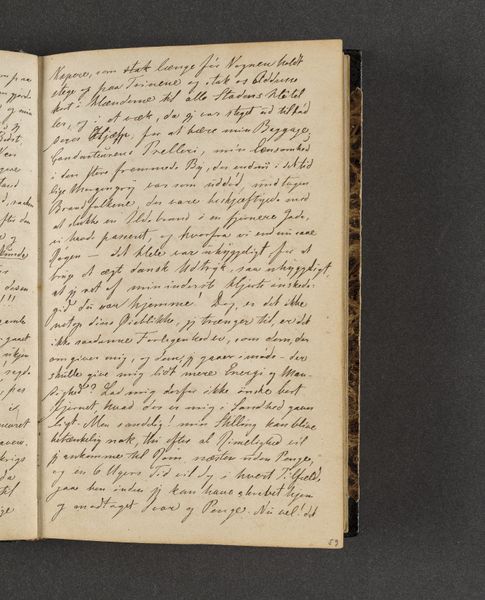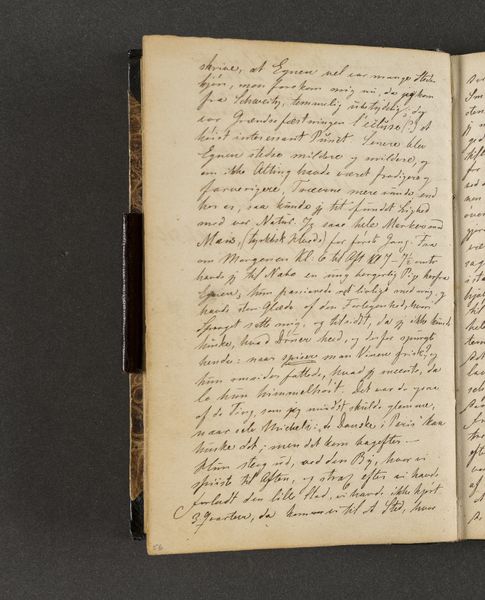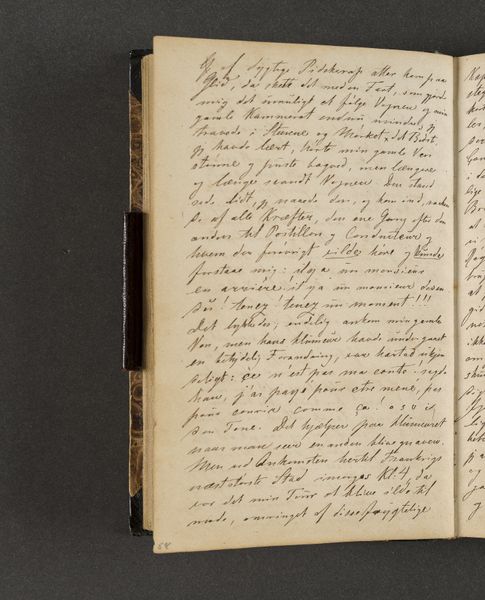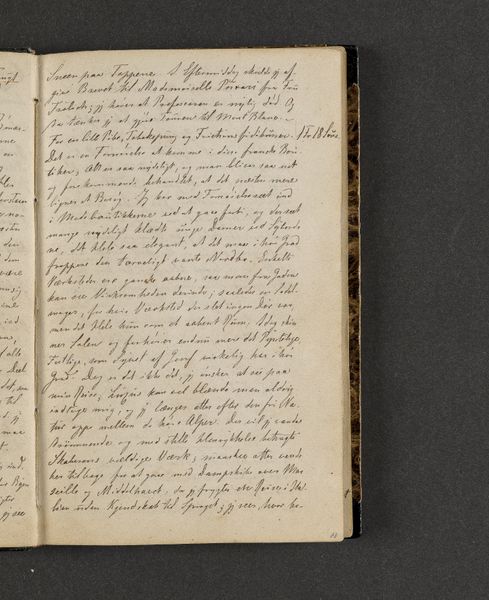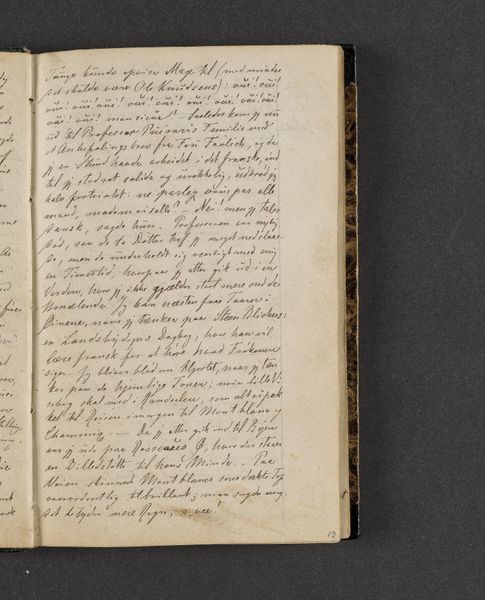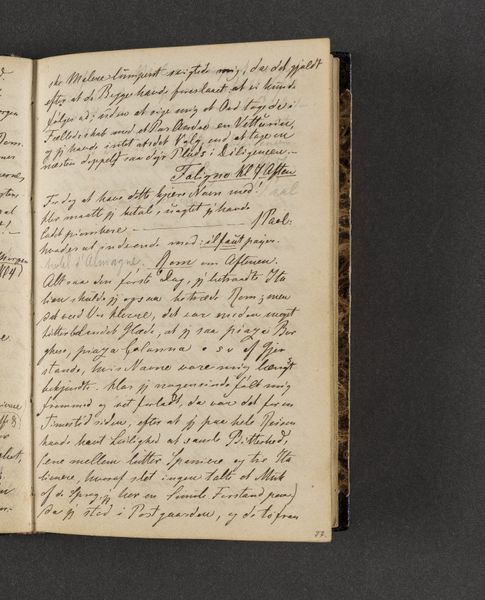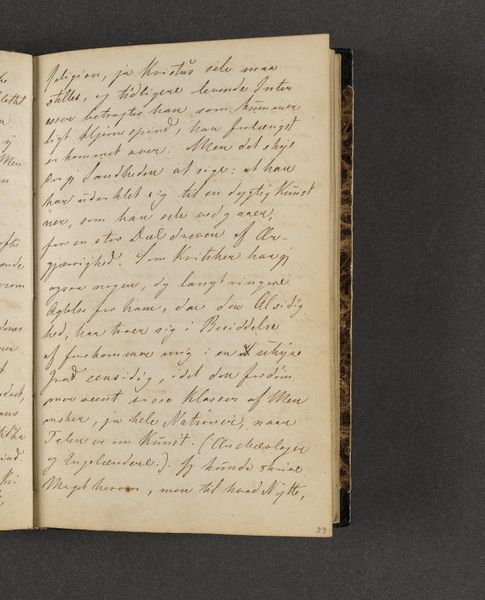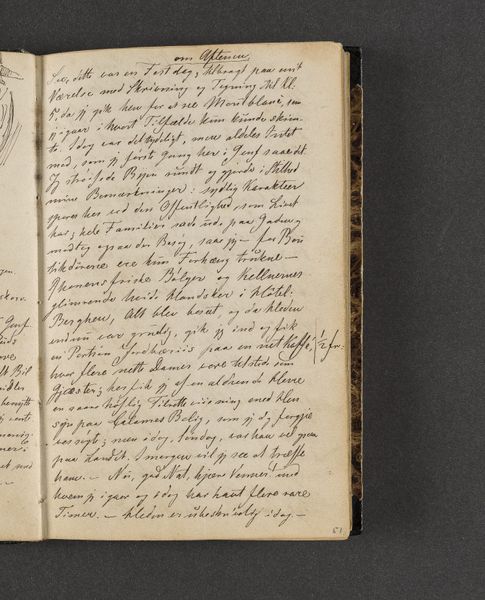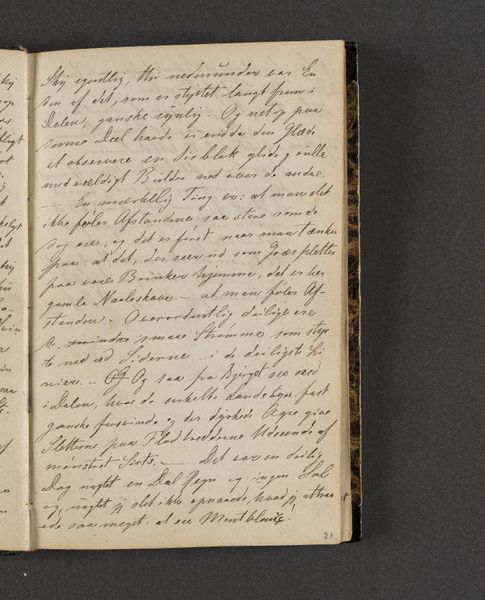
drawing, paper, ink
#
drawing
#
landscape
#
paper
#
ink
#
romanticism
#
miniature
Dimensions: 161 mm (height) x 103 mm (width) x 11 mm (depth) (monteringsmaal)
Curator: Here, we have Johan Thomas Lundbye's "Rejsedagbog" from 1845, rendered in ink on paper. At first glance, what strikes you about it? Editor: It looks like a page torn from a notebook, maybe a travel journal, as the title suggests. It feels incredibly intimate because of that, and dense, because the page is covered with text. What do you see in this piece? Curator: What interests me are the very visible markers of labor and production: the artist’s hand moving across the paper, the ink itself, and the paper which in 1845 would have been produced through particular methods. The journal format blurs the line between ‘high art’ and everyday practice; the act of observing nature is immediately turned into a written record, showing the raw materials both of experience and artistic process. Lundbye's use of a commonplace object makes me think about access, and for whom these landscapes were made accessible, both as places to visit and images to own. Does that influence your interpretation? Editor: Definitely! It challenges this Romantic ideal of untamed nature. The journal, the ink, and the act of writing root the landscape in a specific time and place, mediated through Lundbye's own experiences and the materiality of the artwork. It's no longer just about the view, but about the means of seeing and documenting it. Curator: Precisely. It compels us to think about the consumption of these landscapes, turning observations and material practices into commodities that serve certain audiences and create access for some and exclusion for others. Editor: This was so insightful. Thank you for sharing the historical and social layers embedded within the material and production of this artwork. Curator: My pleasure. Looking at the piece in this way adds depth to a seemingly simple journal entry, revealing the complexities inherent in the making and meaning of art.
Comments
No comments
Be the first to comment and join the conversation on the ultimate creative platform.

